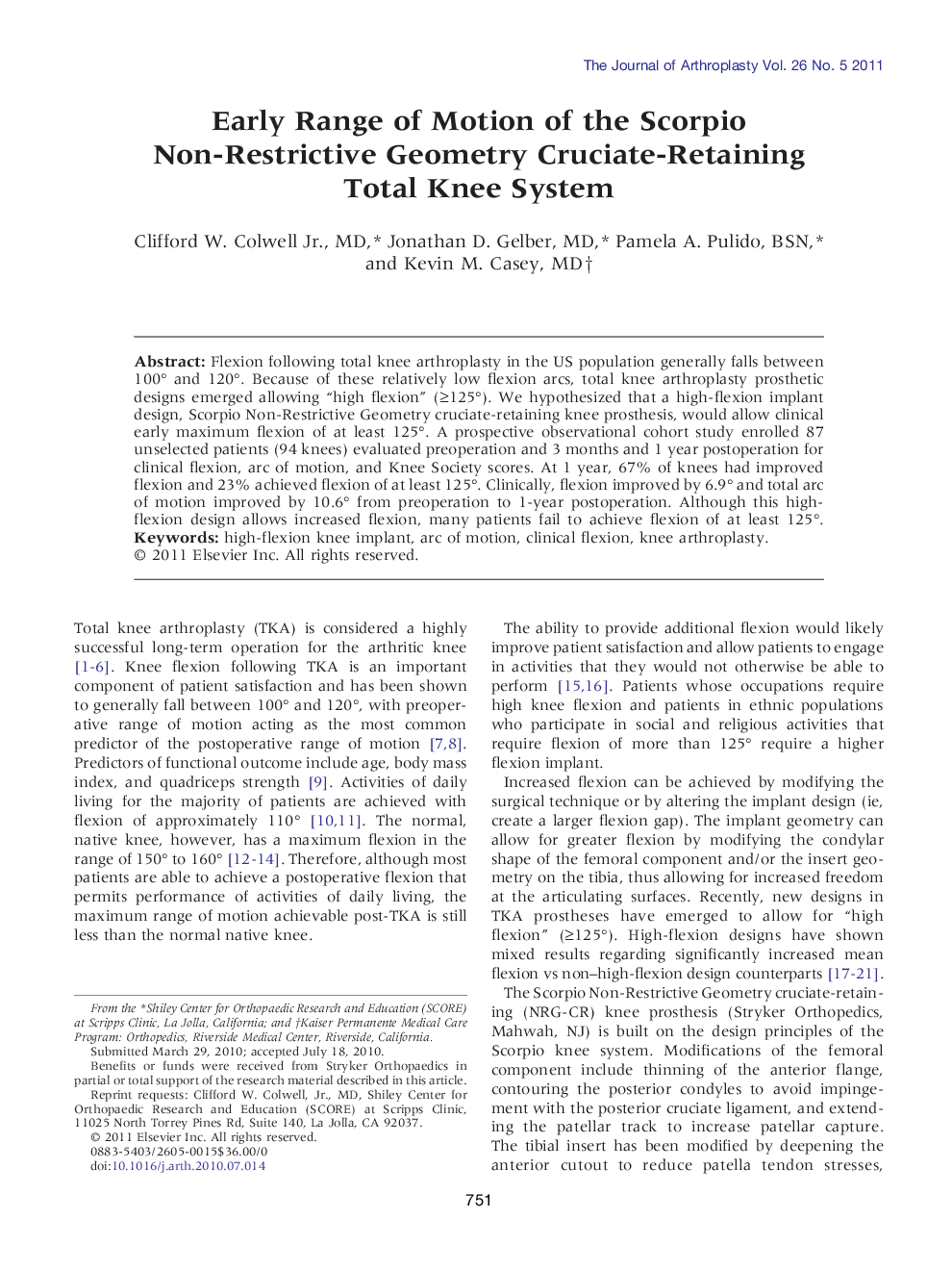| Article ID | Journal | Published Year | Pages | File Type |
|---|---|---|---|---|
| 4062361 | The Journal of Arthroplasty | 2011 | 5 Pages |
Flexion following total knee arthroplasty in the US population generally falls between 100° and 120°. Because of these relatively low flexion arcs, total knee arthroplasty prosthetic designs emerged allowing “high flexion” (≥125°). We hypothesized that a high-flexion implant design, Scorpio Non-Restrictive Geometry cruciate-retaining knee prosthesis, would allow clinical early maximum flexion of at least 125°. A prospective observational cohort study enrolled 87 unselected patients (94 knees) evaluated preoperation and 3 months and 1 year postoperation for clinical flexion, arc of motion, and Knee Society scores. At 1 year, 67% of knees had improved flexion and 23% achieved flexion of at least 125°. Clinically, flexion improved by 6.9° and total arc of motion improved by 10.6° from preoperation to 1-year postoperation. Although this high-flexion design allows increased flexion, many patients fail to achieve flexion of at least 125°.
